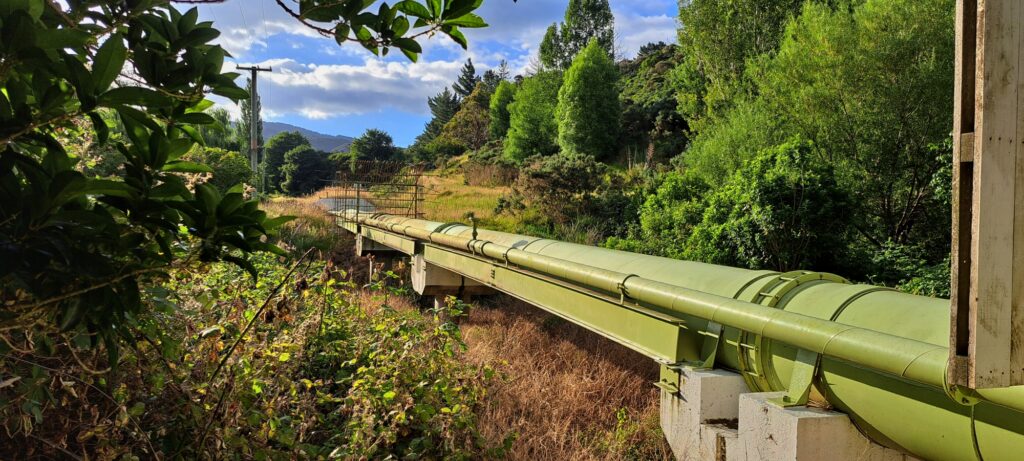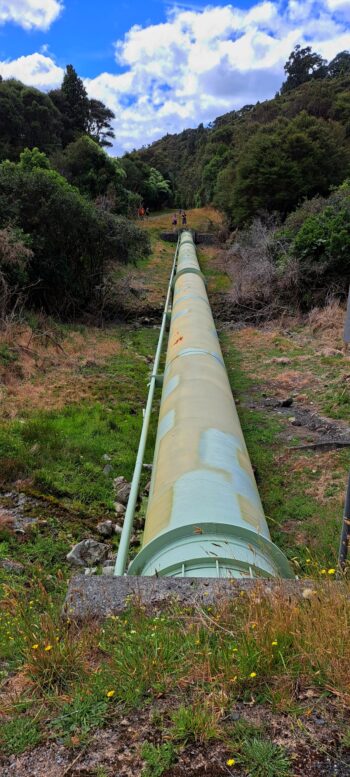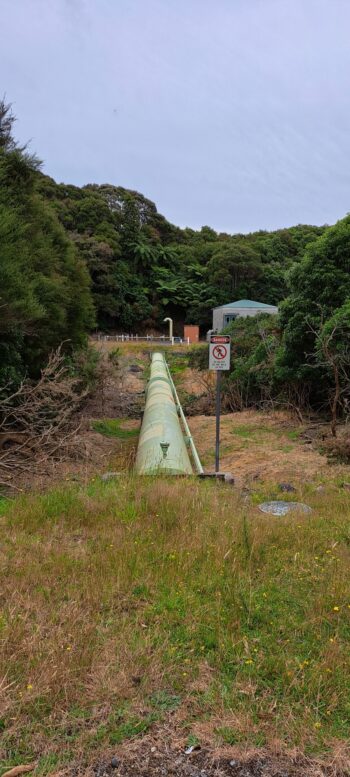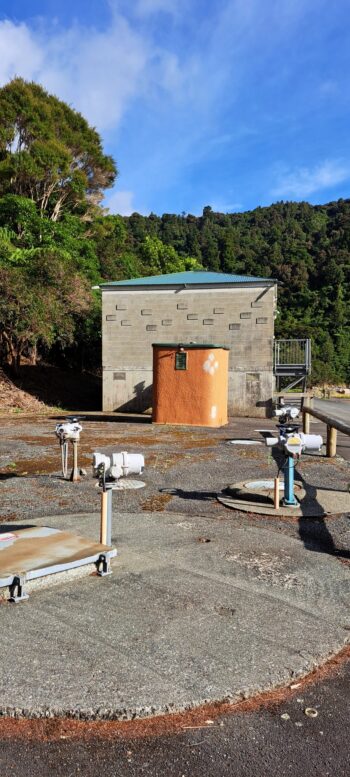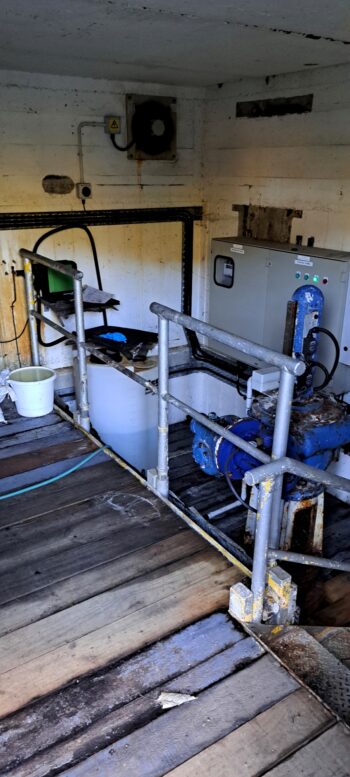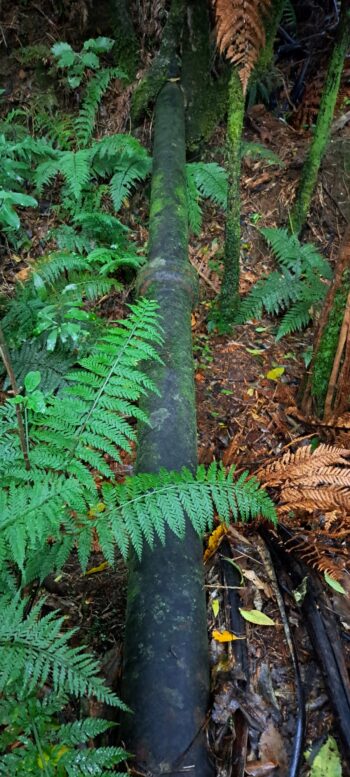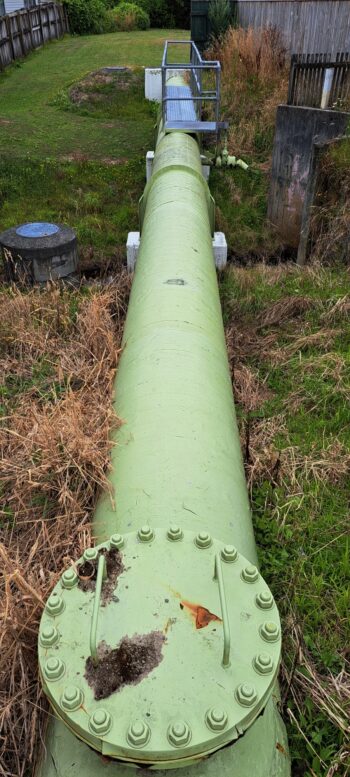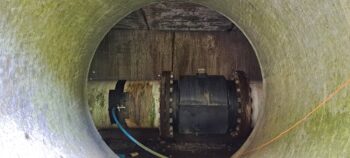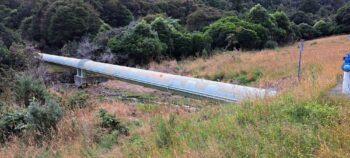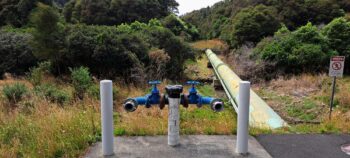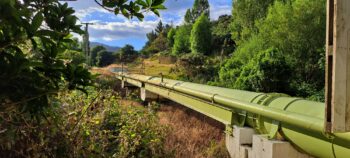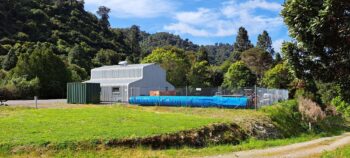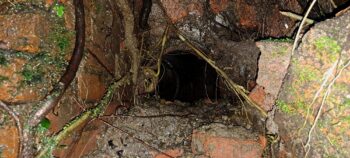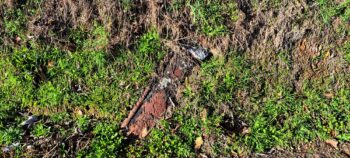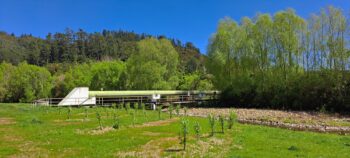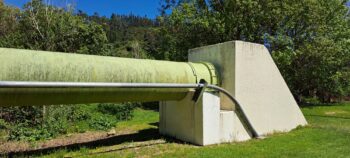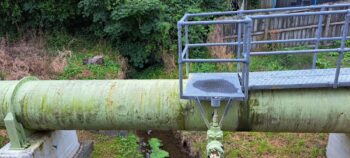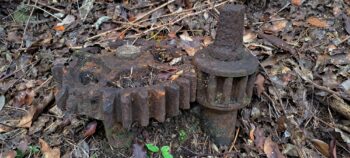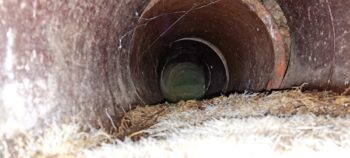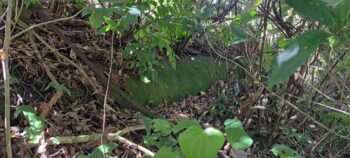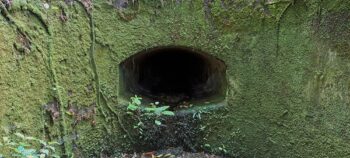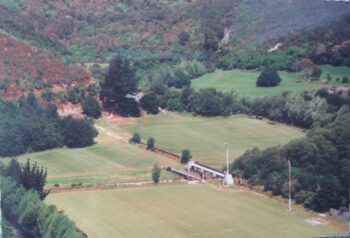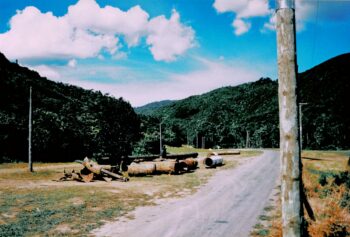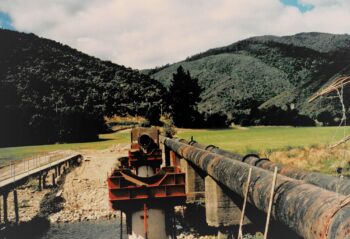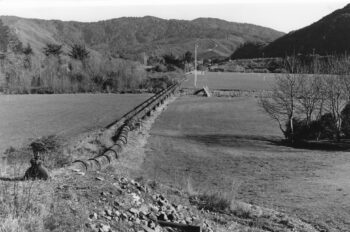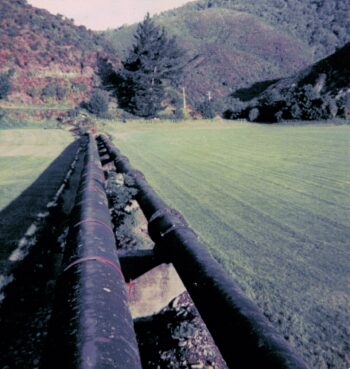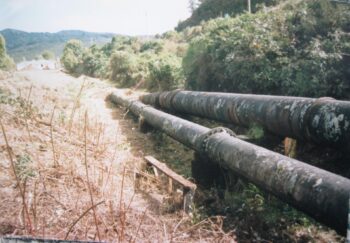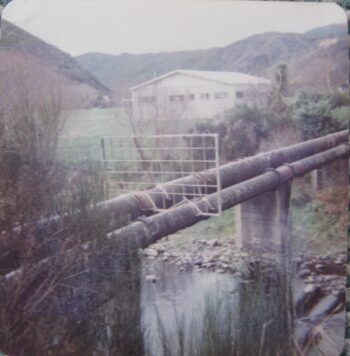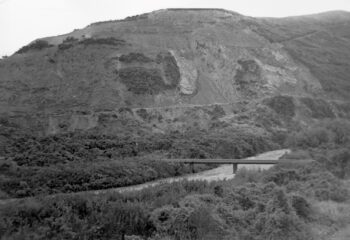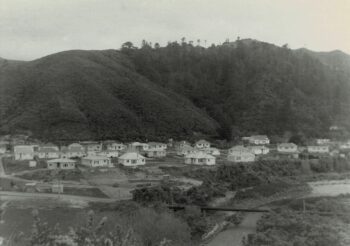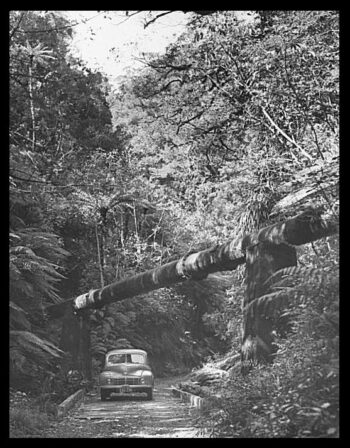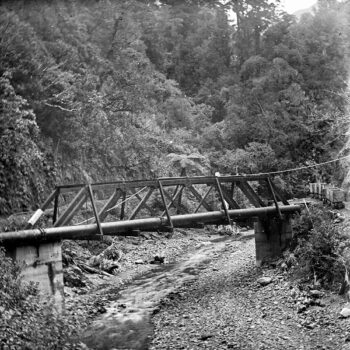Water from rivers in Wainuiomata are directed into a water treatment plant, then distributed through a pipeline network through the valley and into Wellington.
The Wainuiomata pipeline system is part of the Wainuiomata/Orongorongo Water Collection system. On the Orongorongo side, weirs in the Orongorongo River, Big Huia, and Little Huia Streams are piped to the Wainuiomata treatment plant via a 5.6km pipeline and tunnel, with pressure release valves installed upstream of the plant intake. Next to the valves, the water passes through turbine generators housed in a small brick building before the water reaches the plant. On the Wainuiomata side, weirs along Wainuiomata River and George Creek are piped to the same treatment plant.
From the plant, water is then directed to various locations such as Wainuiomata, the Wellington City Business District, and the southern and eastern suburbs of Wellington City. This is achieved through a combination of gravity and pumping stations. The water supply for Wellington originates from two primary bulk water systems, which are interconnected at Nguaranga. This connection between the Kaitoke to Karori and Wainuiomata to Wellington pipelines ensures water security by enabling the transfer of water between them, thus allowing for multiple water sources.
Over the years, pipes have been replaced and even rerouted. The original pipeline has a number of smaller pipes in and around the old pipeline. At least one functioned as a scour pipe, while others were designed to divert water from creeks to protect the main pipeline.
Wainuiomata Water Race
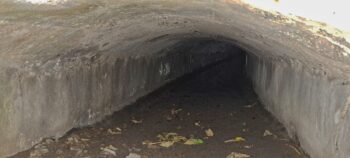 The original pipeline from the dam was a water race built in the late 19th century to transport fresh water from the Wainuiomata River to a pressure well known as Coleman’s Tunnel. Construction of the race and tunnel took place between 1881 and 1883.
The original pipeline from the dam was a water race built in the late 19th century to transport fresh water from the Wainuiomata River to a pressure well known as Coleman’s Tunnel. Construction of the race and tunnel took place between 1881 and 1883.
Over time, as new infrastructure was developed, the race was replaced by a pipeline that bypassed Coleman’s Tunnel. Remnants of the race, including sections of tunnels and old waterworks structures, can still be found in Wainuiomata Regional Park.
Replacement Pipeline
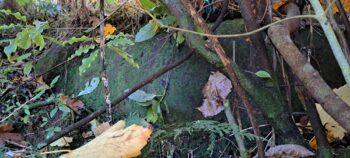 A replacement pipeline was built between 1899 and 1901 to bypass the abandoned Coleman’s Tunnel due to leakage issues. The new 760 mm (30-inch) cast-iron pipe stretched 5.6 km, including a 1 km tunnel.
A replacement pipeline was built between 1899 and 1901 to bypass the abandoned Coleman’s Tunnel due to leakage issues. The new 760 mm (30-inch) cast-iron pipe stretched 5.6 km, including a 1 km tunnel.
While mostly buried, parts of the pipeline remain visible in Wainuiomata Regional Park and nearby areas.
Morton Dam Pipeline
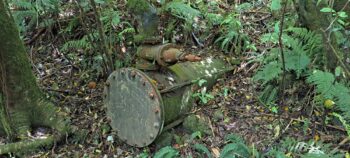 The Morton Dam pipeline, built between 1908 and 1911, was a key part of Wellington’s early water supply system. Named after City Engineer William Hobbard Morton, the dam was 128 metres long and 17 metres tall, featuring a reinforced concrete buttress design.
The Morton Dam pipeline, built between 1908 and 1911, was a key part of Wellington’s early water supply system. Named after City Engineer William Hobbard Morton, the dam was 128 metres long and 17 metres tall, featuring a reinforced concrete buttress design.
A pipeline connected the dam to Wellington’s network, with a duplicate water main from Gracefield to Wellington completed in 1912 to improve capacity. The pipeline followed a lower route through Sinclair Valley (now Wainuiomata Regional Park), passing under the Reservoir Road pumping station before connecting to Coleman’s Tunnel and the Wainuiomata River pipeline.
Orongorongo Pipeline
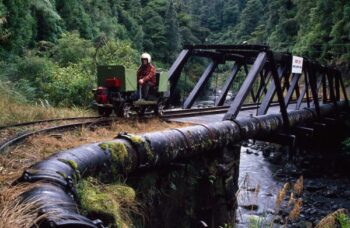 Before the Wainuiomata Water Treatment Plant opened in 1993, the Orongorongo Pipeline supplied untreated water to Wellington. Built between 1921 and 1926, it collected water from weirs on the Orongorongo River and its tributaries, directing it through a 3.2-kilometre tunnel to Wainuiomata.
Before the Wainuiomata Water Treatment Plant opened in 1993, the Orongorongo Pipeline supplied untreated water to Wellington. Built between 1921 and 1926, it collected water from weirs on the Orongorongo River and its tributaries, directing it through a 3.2-kilometre tunnel to Wainuiomata.
After merging with other supplies, the water was transported via pipelines to Wellington, undergoing basic filtration and chlorination. The 5.6-kilometre pipeline ran alongside the Morton Dam pipeline, eventually reaching the Lower Karori Reservoir.
The Green Pipe
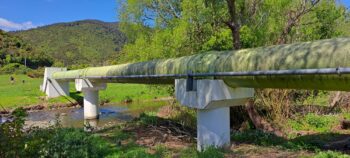 The green pipeline, constructed in 1988, is a key part of Wainuiomata’s water supply infrastructure. Built alongside existing pipelines, it was designed to improve the capacity and reliability of water distribution to the Wellington region.
The green pipeline, constructed in 1988, is a key part of Wainuiomata’s water supply infrastructure. Built alongside existing pipelines, it was designed to improve the capacity and reliability of water distribution to the Wellington region.
Its construction followed the decommissioning of Morton Dam due to earthquake risk and was part of a broader effort to modernise the city’s water system. The pipeline transports treated water from the Wainuiomata Water Treatment Plant.
Pipe Upgrades
Recent projects have focused on renewing ageing water pipelines in the Wainuiomata area. For instance, in December 2023, work commenced on replacing water pipelines in Lees Grove and Holland Street. This initiative, undertaken on behalf of the Hutt City Council, aims to improve the resilience and reliability of the water service.
Additionally, in April 2024, efforts began to renew drinking water pipes in Wainuiomata and Stokes Valley. This project targets reducing leaks and increasing the network’s resilience, ensuring a more dependable water supply for the region.
These upgrades are part of a broader strategy to modernise Wellington’s pipeline system, replacing outdated infrastructure with contemporary solutions to meet current and future demands.

